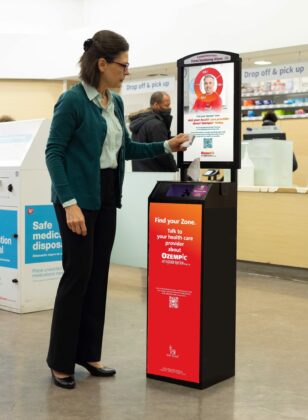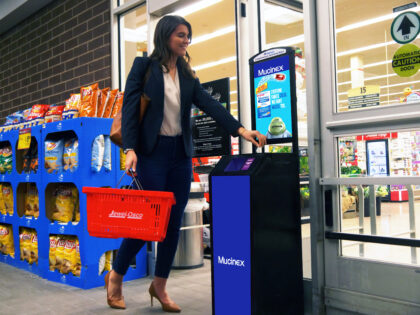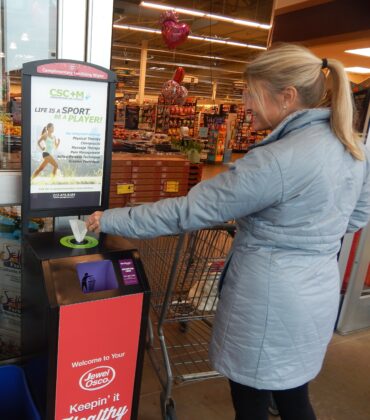More and more pharmaceutical companies are realizing that their advertising investments are better spent on marketing to healthcare professionals (HCPs) rather than consumers. After all, HCPs are the ones who recommend and prescribe medications to their patients and your consumers.
If you’re looking for the best way to incorporate HCP targeting in your marketing campaign, this article will give you a full breakdown.
What Is HCP Targeting?
HCP targeting is a pharmaceutical marketing strategy that delivers advertising material to healthcare professionals. Once you’ve identified which HCP specialties to target, the next step is to consider what challenges they face and how your product can provide a solution for them and their patients.
If you’re uncertain about how to proceed, working with a healthcare marketing firm can offer valuable insights. Pharma marketers will often segment HCPs by their specialties to target medical professionals that are most likely to be interested in the advertised drug or treatment.
The Importance Of HCP Segmentation
Effective advertisements appeal to the target audience’s needs and preferences. So if you ask yourself what is HCP marketing, it’s about tailoring your message to healthcare professionals. By segmenting your HCP marketing campaign, you can deliver personalized messages to each group.
Healthcare professionals have a variety of specialties and it’s crucial to understand which ones are most likely to use your products. For example, a heart medication producer is much more likely to have success by reaching cardiac specialists and geriatric doctors rather than pediatricians.
When you deliver relevant content to the right audience, you are far more likely to convert new HCPs to your treatments and improve the customer experience. Remember that your marketing material for HCPs should be different than what’s geared towards the general population. HCPs love to see clinical data and research on the efficacy of your products and unique selling points on why it’s superior to alternative medications.
HCP targeting and segmentation can also help you in future advertising efforts. You can evaluate which group of HCPs responds best to your advertisements and invest in that segment more heavily for your next campaign
HCP Targeting Strategies
Once you’ve identified which HCP specialties to target, the next step is to consider what challenges they face and how your product can provide a solution for them and their patients. With an understanding of who to target and what they care about, you can then consider the best advertising mediums to utilize.
Online
Online HCP marketing and advertising strategies often use a combination of targeted social media ads, email marketing, and banner ads. The benefit of advertising online is that user data is constantly tracked, stored, and sold to marketers for precision targeting.
However, in our increasingly digital world, many marketers believe that online advertising is an oversaturated market. Since consumers are bombarded with online advertisements anytime they use the internet, many have learned how to ignore them. In fact, one study showed that 86% of consumers have “banner blindness”, a phenomenon where people have zero recollection of online ads that appear on websites they use.
Physical
Out-of-home (OOH) advertising mediums can be a bit harder to use precise targeting techniques. Highway billboards or street furniture located near healthcare facilities can have some success, but they are still mostly viewed by the general public.
There is one OOH advertising medium that’s perfect for targeting HCPs: wellness billboards. Wellness billboards are often located in pharmacy wait areas and dispense a sanitizing wipe below a prominently featured advertisement. Terraboost is a leader in this advertising channel and has over 6,000 data points that marketers can use to select ad placement. For example, a pharmaceutical company selling diabetes medication can work with Terraboost to see which pharmacies serve the most diabetic consumers and feature advertisements there.
New Trends in HCP Targeting
As technology becomes more advanced, so do the marketing tools that pharma companies can deploy to reach HCPs.
Artificial intelligence and advanced algorithms have been used to analyze HCP behaviors and even to automate certain aspects of marketing campaigns. One of the most common uses of AI in marketing comes from programmatic digital out-of-home ads. These ads use AI technology to select and automatically purchase the best DOOH ad placements based off of predetermined factors. For example, the automated tech behind programmatic ads could feature your brand at a digital kiosk where a medical event is taking place.
Physical ad space has also been revolutionized by tools like geofencing and retargeting. Both of these tools use anonymized mobile location data to track consumers and HCPs that have interacted with your displays. Once the mobile data has been tracked, preprogrammed ads can then be delivered to their devices. Let’s say that a consumer takes a wipe from a Terraboost sanitizing kiosk in Walgreens that’s equipped with retargeting capabilities. The next time that shopper visits a website or uses a search engine, they’ll see an advertisement for your brand once again.
Another recent trend in pharma marketing is the use of an omnichannel approach. The goal of omnichannel marketing is to synergize your ad content across all your physical and digital mediums to provide HCPs and consumers with a seamless and integrated experience. To pull this off, you’ll want to incorporate unique content in each of your ad channels that encourages HCPs to explore your brand further.
Creating a marketing campaign that successfully targets HCPs can be immensely difficult since there are a variety of multi channel marketing pharma strategies and advertising mediums to select from. If you’re looking for some key industry insights, reach out to a Terraboost agent today. We have helped many pharmaceutical companies, like Pfizer, leverage the power of OOH.
Our 120,000+ wellness billboards are located in top pharmacy locations across the country like Walgreens, Rite Aid, and CVS. Plus, we are trail blazers in the wellness billboard medium, and studies from Nielsen Media Research have shown that 80% of shoppers engage with our sanitizing kiosks and that 50% would take a coupon or brochure to learn more about the sponsored company.
If you’re ready to deploy an innovative and targeted approach to HCP marketing, get in touch with a Terraboost agent for a free personalized quote.



